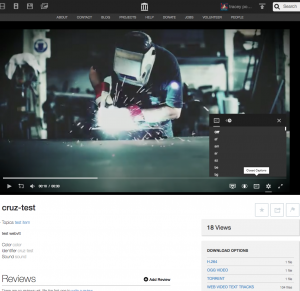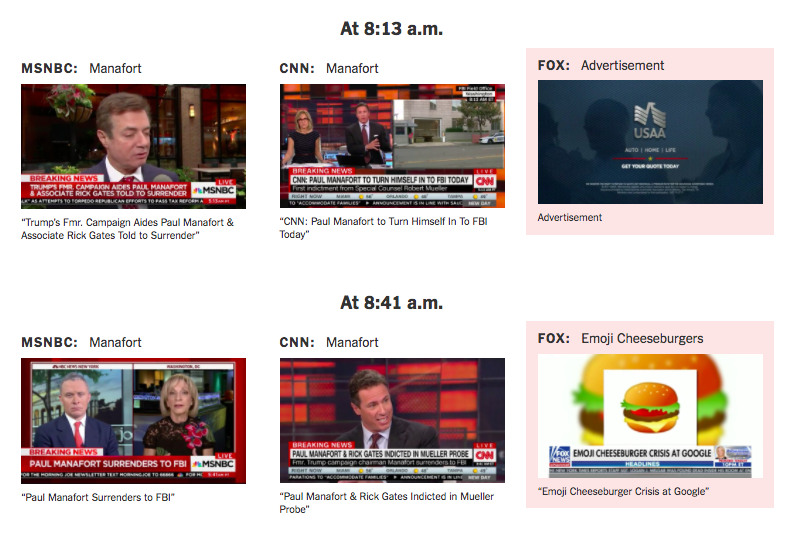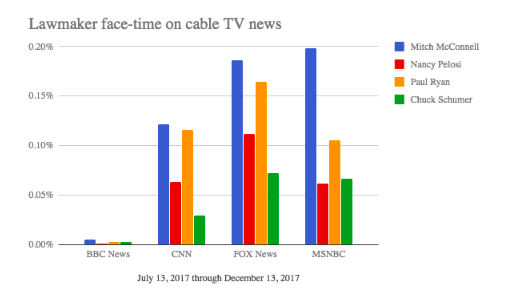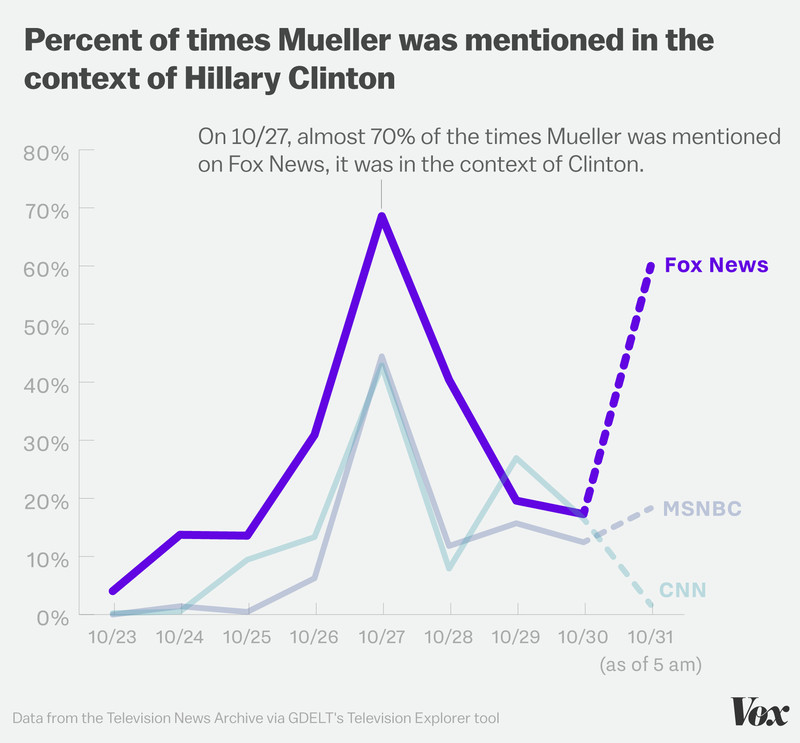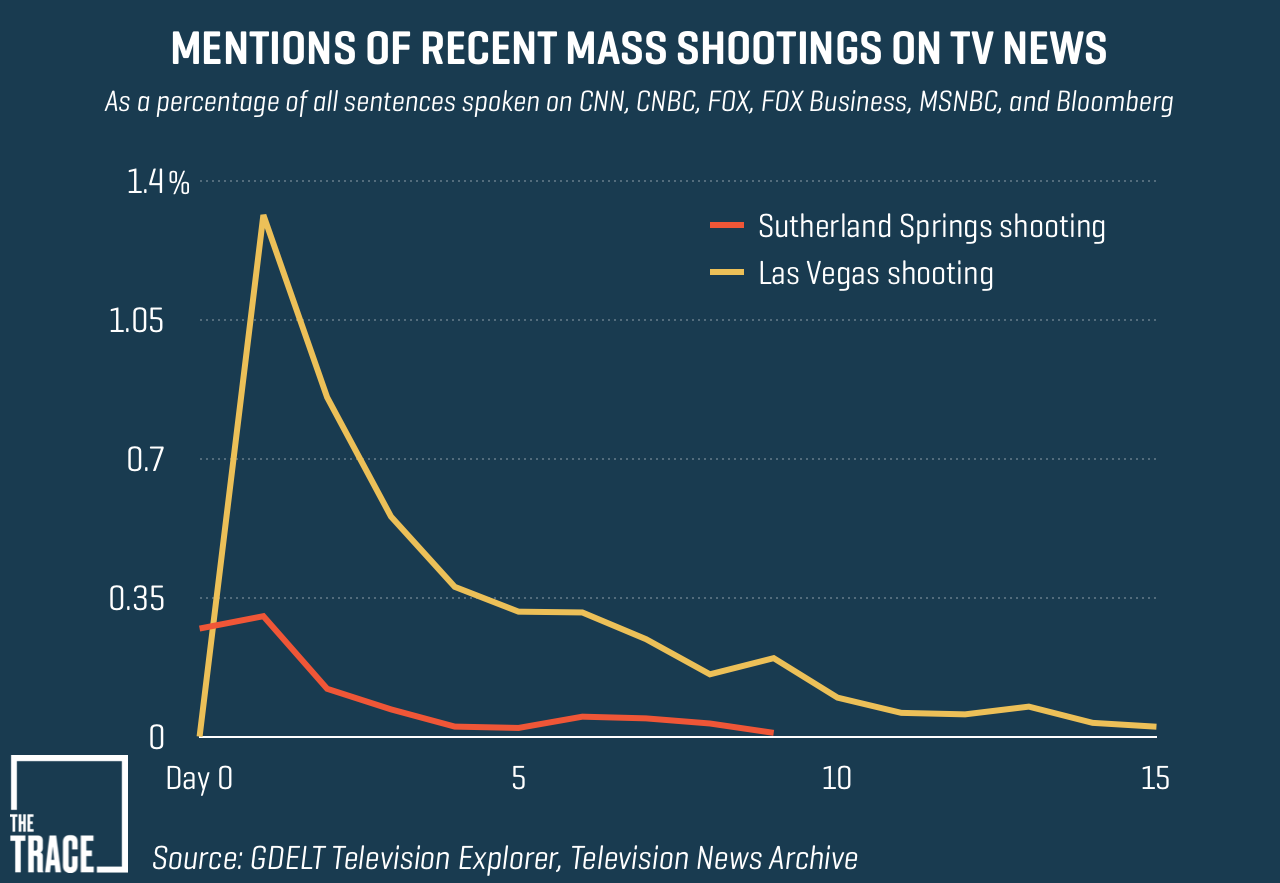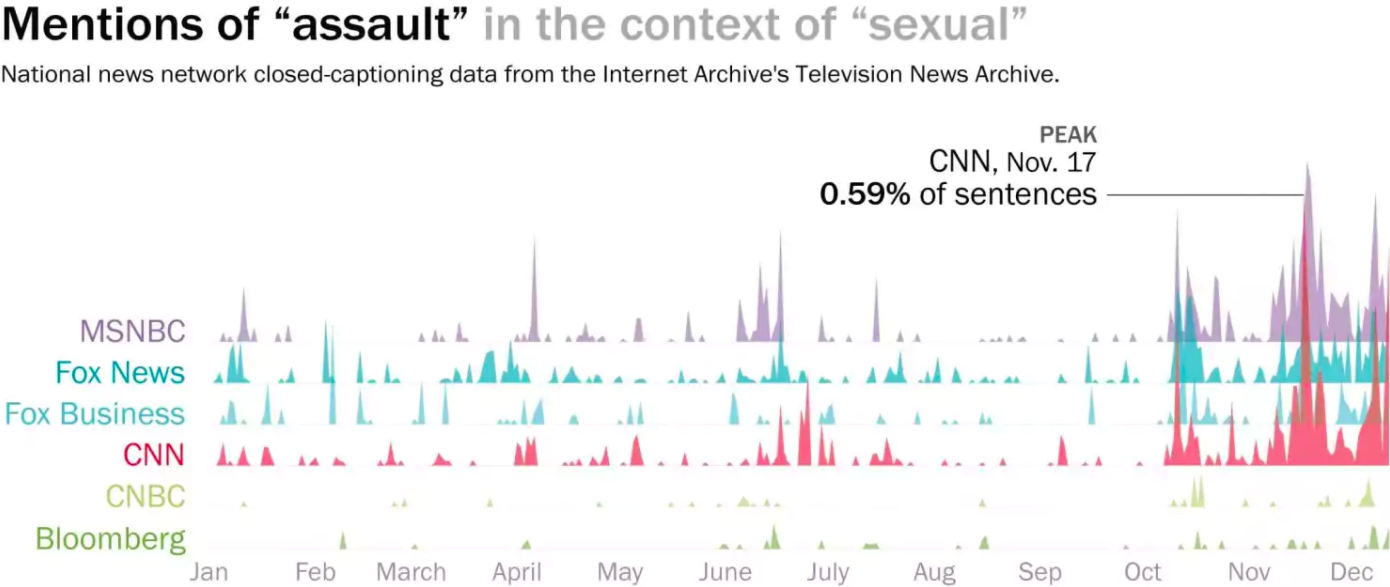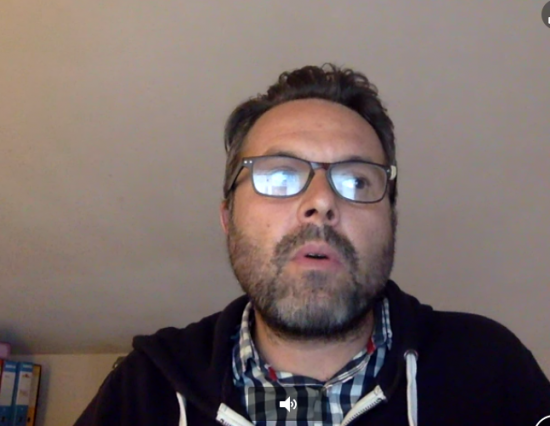A biweekly round up on what’s happening at the TV News Archive by Katie Dahl and Nancy Watzman
Fox News downplayed Mueller indictment, according to NYT editorial chyron analysis
In the most intensive use the Internet Archive’s Third Eye data to date, The New York Times editorial page analyzed chyron data to show how Fox News downplayed this week’s news of the indictment of former Trump campaign manager and other legal developments. The graphic-heavy opinion piece was featured at the top of the online homepage much of the day on Wednesday, Nov. 1:
Though it is far from the only possible way to evaluate news coverage, the chyron has become something of a touchstone for media analysts, being both the most obvious visual example of spin or distraction and the most shareable. Any negative coverage of the president usually prompts a flurry of tweets cataloguing the differences among networks in their chyron text. While CNN, MSNBC and the BBC are typically in alignment, Monday morning was a particularly stark example of how Fox News pushes its own version of reality.
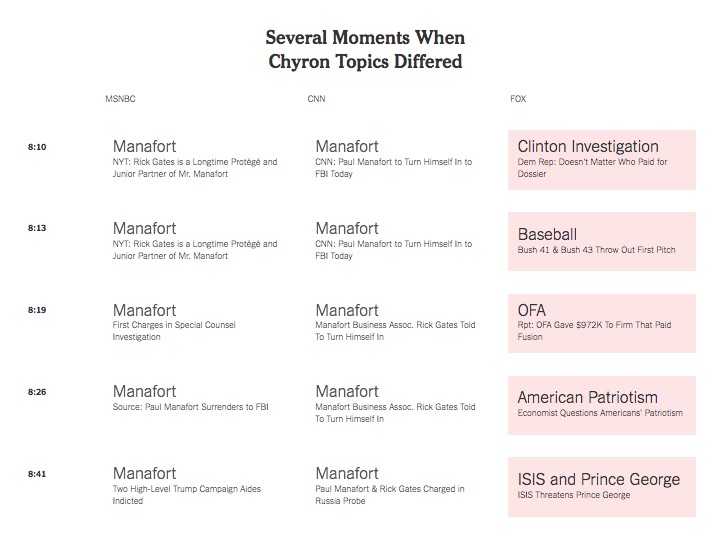 Read The New York Times opinion piece, and dig into the data yourself.
Read The New York Times opinion piece, and dig into the data yourself.
Captions yield insights on Mueller investigation, shooting coverage
Fox News actively tried to “plant doubt in viewers’ minds” as Mueller brought charges against former Trump campaign officials, according to an analysis of a week’s worth of closed captions by Alvin Chang of Vox News. Chang used Television Explorer, fueled by TV News Archive data, to crunch the numbers behind charts such as the one below.
 And The Trace, an independent, nonprofit news organization that focuses on gun violence, used TV News Archive caption data via Television Explorer to show how TV news coverage of mass shootings declines quickly.
And The Trace, an independent, nonprofit news organization that focuses on gun violence, used TV News Archive caption data via Television Explorer to show how TV news coverage of mass shootings declines quickly.
Face-o-Matic captures congressional leaders reactions on indictments
In the 24 hours following news breaking about the indictments, our Face-o-Matic data feed captured cable news networks’ editorial choices on how much face-time to allot to congressional leaders’ reactions. The answer: not much.
All together the four congressional leaders’ faces were shown for a total of 2.5 minutes on indictment-related reporting on screen by CNN, Fox News, and MSNBC. Ryan got the lion’s share of the attention. Much of this was devoted to airings of his photo in connection with his official statement,“[N]othing is going to derail what we are doing in Congress, because we are working on solving people’s problems.”
The image of Senate Majority Leader Mitch McConnell, K., Ky., was not featured by any network. House Minority Leader Nancy Pelosi, D., Calif., got attention only from Fox News, which featured her photo with discussion of her statement, in which she said despite the news, “we still need an outside fully independent investigation.”
Fact-check:Papadopoulos had a limited role in Trump campaign (had seat at table/not the whole story)
One of the most parsed statements this week was White House press secretary Sarah Huckabee Sanders’ claim that George Papadopolous, who pleaded guilty to lying to the FBI, had an “extremely limited” role in the campaign. “It was a volunteer position,” she said. “And again, no activity was ever done in an official capacity on behalf of the campaign.”
“Determining how important Papadopoulos was on the Trump team is open to interpretation, so we won’t put this argument to the Truth-O-Meter,” wrote Louis Jacobson, reporting for PolitiFact. Jacobson, however, laid out the known facts. For example, in March 2016, then presidential candidate Donald Trump tweeted out a photo of himself and advisors sitting at a table, saying it was a “national security meeting.” Papadopoulos is seen at the table sitting near future Attorney General Jeff Sessions. However, Jacobson also writes,“There is some evidence to support the argument that Papadopoulos was freelancing by pushing the Russia connection.”
Reviewing Sanders’ claim, as well as a Trump tweet along similar lines, Robert Farley and Eugene Kiely took a similar tack for FactCheck.org, concluding that Papadopoulos had a “seat at the table” in the campaign, but it was beyond licking envelopes and posting lawn signs: “What we do know is that during this time — from late March to mid-August — Papadopoulos was in regular contact with senior Trump campaign officials and attended a national security meeting with Trump. We will let readers decide if this constitutes a ‘low-level volunteer.'”
Embed TV News Archive clips on web annotations
Now you can embed TV News Archive news clips when commenting and annotating the web, thanks to a new integration from Hypothes.is. From the Hypothesis.is blog:
This integration makes it easy for journalists, fact-checkers, educators, scholars and anyone that wants to relate specific text in a webpage, PDF, or EPUB to a particular snippet of video news coverage. All you need to do to use it is copy the URL of a TV News Archive video page, paste it into the Hypothesis annotation editor and save your annotation. You can adjust the start and end of the video to include any exact snippet. The video will then automatically be available to view in your annotation alongside the annotated text.
See a live example of the integration in this annotation with an embedded news video of Senator Charles Schumer at a news conference over a post that checks the facts in one of his statements.
“This integration means that one of the world’s most valuable resources — the news that the Internet Archive captures across the world everyday — will be able to be brought into close context with pages and documents across the web,” said Hypothesis CEO Dan Whaley. “For instance, a video of a politician making an actual statement next to an excerpt that claims the opposite, or a video of a newsworthy event next to a deeper analysis of it.”
Please take Hypothes.is for a spin and let us know what you think: tvnews@archive.org.
Follow us @tvnewsarchive, and subscribe to our biweekly newsletter here.






